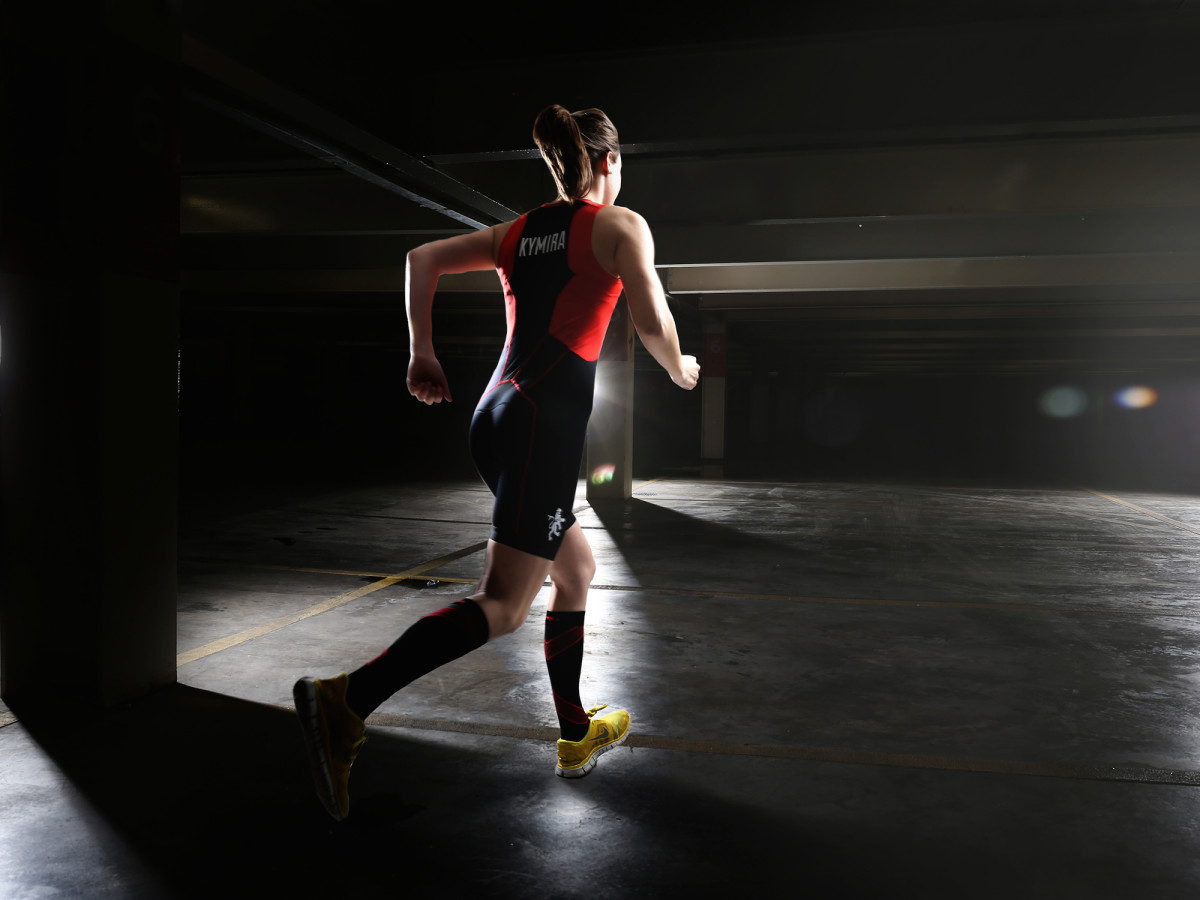NASA-inspired infrared activewear from KYMIRA Sport says it can help with recovery

The next time you bring the heat, your clothes might recycle it back to you.
British sports apparel company KYMIRA Sport was at South by Southwest in Austin last weekend demoing its NASA-inspired technology to an American audience. KYMIRA Sport’s fabric is designed to absorb heat and infrared radiation from an athlete’s body, then emit that back to the athlete at a different infrared wavelength. The idea behind that is that infrared light can stimulate processes within the body that increase circulation and decrease pain—it’s the same concept behind New England Patriots quarterback Tom Brady’s athlete recovery sleepwear line with Under Armour.
Tom Brady's secret to recovery lies in his new tech-infused Under Armour sleepwear
The company has worked with several elite athletes in the U.K., including rowers, cyclists and members of the British armed forces. KYMIRA founder and CEO Tim Brownstone says that the company’s clothing has also been used by customers to improve circulation and help alleviate arthritis and Reynaud’s syndrome, which causes reduced blood flow to extremities. Lightweight rower Amy Grieve, who started using KYMIRA Sport’s compression gear back when the company first launched in 2013, calls it her “magic tights.” In 2014, Grieve and her rowing partner Minna Jones-Walters won the senior lightweight double competition at Henley Women’s Regatta.
Back in 2006, when Brownstone was a 16-year-old high school student, he was browsing academic papers for a science class when he found a NASA research paper on how they were using infrared light to make plants grow quicker in space. Brownstone was also struggling with a knee injury that had sidelined him from competing as a sprinter, and wondered whether infrared light could speed up his healing process.
“I thought there must be a similar effect on animal cells,” he says.
Brownstone studied animal biochemistry at the University of Reading in the U.K., hoping to find a way to develop medical applications, such as a wound dressing, using the infrared effect. But he switched to focus initially on consumer sports tech because of the cost and regulation involved in creating medical devices.

“The sportswear is key to all of that because it unlocks and funds everything else,” Brownstone says. Brownstone launched KYMIRA in 2013, the spring of his junior year, using money saved over from a student loan.
The far infrared light emitted by KYMIRA Sport’s clothing is invisible to the human eye, but can penetrate about 1.5 inches beneath the skin. Unlike the NASA study that started Brownstone’s interest, and which used LEDs, there are no electronics in KYMIRA Sport's compression gear. Brownstone won’t say exactly what material his company weaves into the fibers to make them infrared emitting, but studies of the effects of far infrared by scientists in Taiwan used ceramic powders. A study by Ting-Kai Leung at Taipei Medical University published in the Journal of Medical and Biological Engineering in 2014 found that far infrared could reduce cell damage from radiation or hydrogen peroxide exposure. The research indicated that this occurred by decreasing oxidative stress, effectively working as an antioxidant.
Obstacle Course Racing moves one step closer to becoming an Olympic sport
The mechanism for how far infrared effects the body is still not completely understood by scientists, but other studies have shown far infrared can improve circulation and delay the onset of fatigue. According to Brownstone, KYMIRA Sport’s technology can increase tissue oxygenation by 20% and respiration efficiency by 1.8%.
“The efficiency of respiration was increased,” he says, “so less oxygen was being consumed to achieve the same workout.” KYMIRA Sport’s athletes haven’t used the clothing in competitions, but for training and warming up before races or cooling down afterwards, noting reduced muscle soreness after exercise.
Brownstone also says that the clothes can help with temperature regulation. The material returns some of the energy an athlete would usually lose as heat, which could help the athlete to stay warmer in cold conditions than similar thickness standard compression gear. Conversely, because the material emits in all directions, not just towards the athlete’s body, it can help resist the heat of direct sunlight by emitting that energy away.
